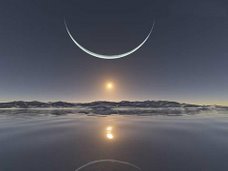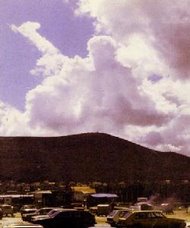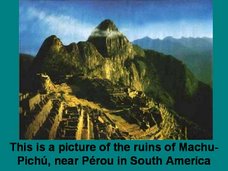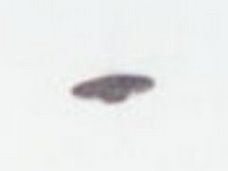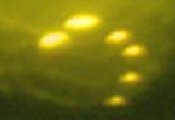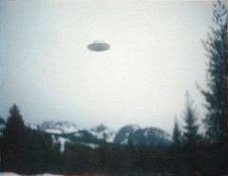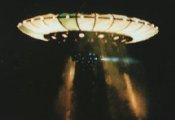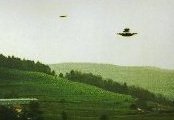 In 1966, two British soldiers, Captain John Ridgway and Sergeant Chay Blyth, successfully rowed across the Atlantic Ocean. They subsequently wrote an account of their trip in "A Fighting Chance". At one page in the book they described an extraordinary experience: Ridgway is rowing on a balmy night, "lulled by the unending monotony". He writes: "I was shocked to full wakefulness by a swishing noise to starboard. I looked out over the water and suddenly saw the writhing, twisting shape of a great creature. It was outlined by the phosphorescence in the sea as if a string of neon lights were hanging from it. It was an enormous size, some 35 or more feet long, and it came towards me quite fast. I must have watched it for some ten seconds. It headed straight at me and disappeared right beneath me.
In 1966, two British soldiers, Captain John Ridgway and Sergeant Chay Blyth, successfully rowed across the Atlantic Ocean. They subsequently wrote an account of their trip in "A Fighting Chance". At one page in the book they described an extraordinary experience: Ridgway is rowing on a balmy night, "lulled by the unending monotony". He writes: "I was shocked to full wakefulness by a swishing noise to starboard. I looked out over the water and suddenly saw the writhing, twisting shape of a great creature. It was outlined by the phosphorescence in the sea as if a string of neon lights were hanging from it. It was an enormous size, some 35 or more feet long, and it came towards me quite fast. I must have watched it for some ten seconds. It headed straight at me and disappeared right beneath me."I stopped rowing. I was frozen with terror at this apparition. I forced myself to turn my head to look over the port side. I saw nothing, but after a brief pause, I heard a most tremendous splash...I am not an imaginative man, and I searched for a rational explanation...Chay and I had seen whales and sharks, dolphins and porpoises, flying fish - all sorts of sea creatures, but this monster in the night was none of these. I reluctantly had to believe that there was only one thing it could have been - a sea serpent."
There is no reason to doubt the authenticity of this reported sighting of a sea monster. Nor is the report unique. Since the begining of the seventeenth century, there have been thousands of reports of sightings of underwater monsters. The largest number of these relate to a huge, long-necked monster which reportedly lives at the bottom of a large lake called Loch Ness in Scotland. Nobody can doubt that something has been seen in Loch Ness, and photographed with some success, many times. That every sighting is a hoax, or self delusion, simply does not stand up to personal investigation. Researchers for a film in the US television series called "In search of..." interviewed more than 20 witnesses who not only had strikingly vivid and consistent stories to tell, but who had no overt motive for inventing them - doctors, policemen, retired people who actively disliked the crowds Nessie (the name given to the Loch Ness monster) brings; and these people represented only a tiny fraction of the hundreds who had seen an unusual object in the Loch since the road alongside was opened in 1933 and made sightings much easier.
But, at the same time, 'hard' evidence remains defiantly elusive. In spite of intense and expensive efforts, nobody has yet succeeded in luring the Loch Ness monster (or one of them, in case there are more than one in the lake) into a position where it can be conclusively photographed, or trapped long enough for an examination to be made. No carcase has ever been found (perhaps because the nature of the cold, steep-sided loch causes them to sink to the bottom), and no obvious source of food is known.
In the absence of 'concrete' evidence many scientists will understandably continue to reject the monster idea. However, there is another way - also scientific - of looking at the number of sightings of underwater monsters, pioneered by the belgian zoologist Bernard Heuvelmans: to see what picture can be drawn when all the massive amount of cumulative reported detail is analysed statistically. in his classic work "In the Wake of the Sea Serpents" he has shown that it is totally unscientific to dismiss reports just because they do not coincide with the known catalogue of the world's sea creatures. As with witnesses of the Loch Ness monster, he found it relatively easy to sort out the deliberate hoaxes and the mistakes from the 587 reports of monster-sightings that he examined, dating from 1639 to the end of the twentieth century. After eliminating these, and the ones too vague to be useful, he was still left with 358 there was no reason to doubt.
From such reports he fed into the computer every detail that might throw light on the creatures. As a result, nine specific types of underwater monster emerged together with the number of clear sightings of each that were analysed. All of them satisfyingly filled "quite distinct ecological niches", living in different levels of water and at different temperatures so that they "cannot compete except where these habitats meet, which agrees perfectly with the laws of nature."
The result is a scientific statement that underwater monsters, however exaggerated some tales of the past may, perhaps, be a reality.



